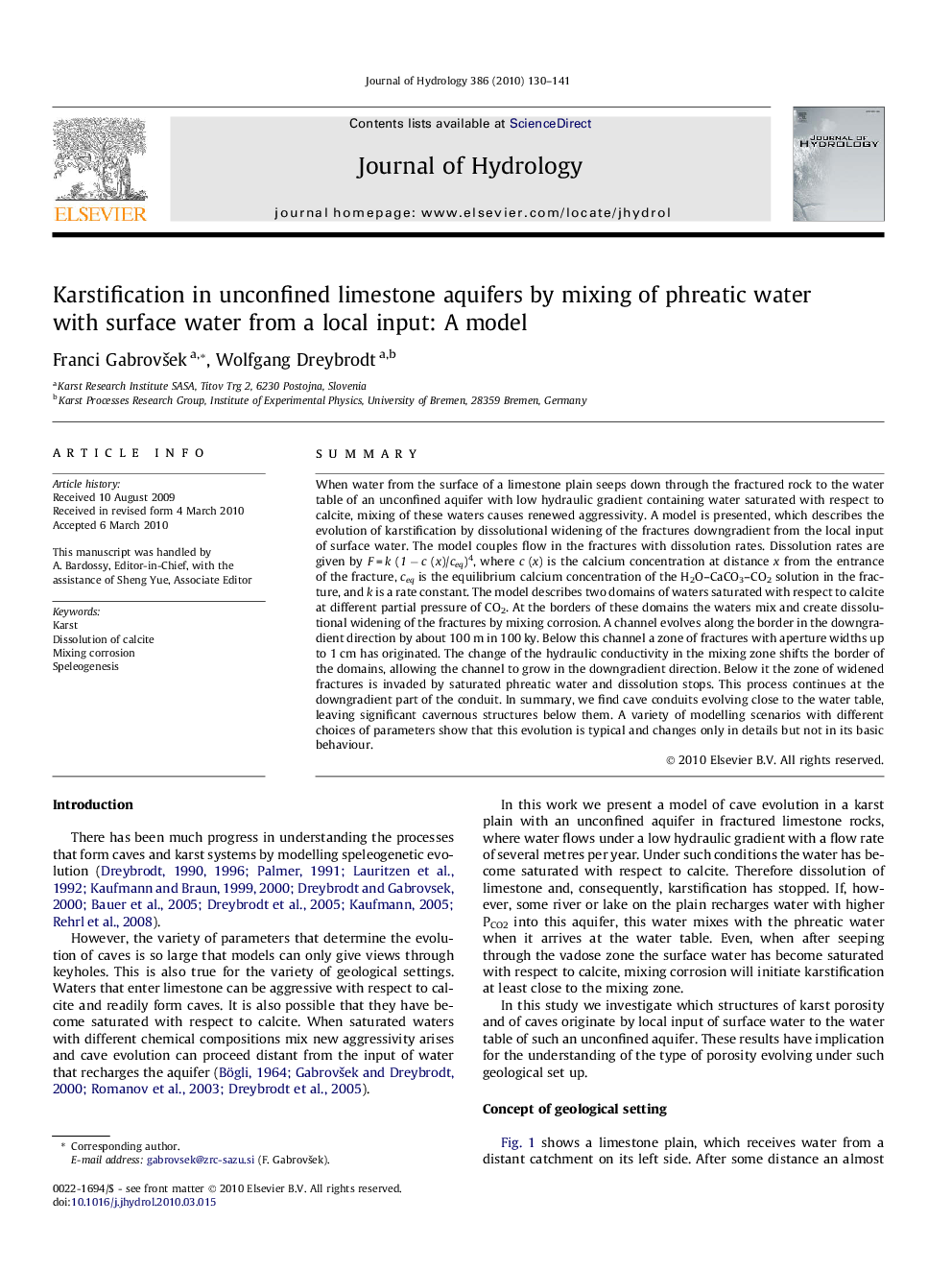| کد مقاله | کد نشریه | سال انتشار | مقاله انگلیسی | نسخه تمام متن |
|---|---|---|---|---|
| 4578219 | 1630055 | 2010 | 12 صفحه PDF | دانلود رایگان |

SummaryWhen water from the surface of a limestone plain seeps down through the fractured rock to the water table of an unconfined aquifer with low hydraulic gradient containing water saturated with respect to calcite, mixing of these waters causes renewed aggressivity. A model is presented, which describes the evolution of karstification by dissolutional widening of the fractures downgradient from the local input of surface water. The model couples flow in the fractures with dissolution rates. Dissolution rates are given by F = k (1 − c (x)/ceq)4, where c (x) is the calcium concentration at distance x from the entrance of the fracture, ceq is the equilibrium calcium concentration of the H2O–CaCO3–CO2 solution in the fracture, and k is a rate constant. The model describes two domains of waters saturated with respect to calcite at different partial pressure of CO2. At the borders of these domains the waters mix and create dissolutional widening of the fractures by mixing corrosion. A channel evolves along the border in the downgradient direction by about 100 m in 100 ky. Below this channel a zone of fractures with aperture widths up to 1 cm has originated. The change of the hydraulic conductivity in the mixing zone shifts the border of the domains, allowing the channel to grow in the downgradient direction. Below it the zone of widened fractures is invaded by saturated phreatic water and dissolution stops. This process continues at the downgradient part of the conduit. In summary, we find cave conduits evolving close to the water table, leaving significant cavernous structures below them. A variety of modelling scenarios with different choices of parameters show that this evolution is typical and changes only in details but not in its basic behaviour.
Journal: Journal of Hydrology - Volume 386, Issues 1–4, 28 May 2010, Pages 130–141